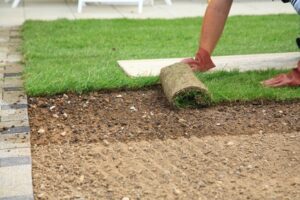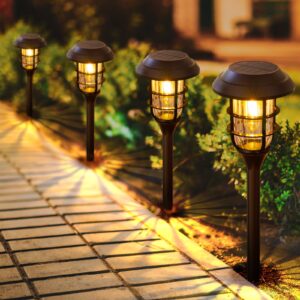The Basics of Sod and Turf
A lush and manicured lawn adds value to your property. It also creates an attractive curb appeal.
If your lawn is weedy or susceptible to erosion, sod may be the best choice for you. However, there are some considerations to make before buying sod. Cost, permanency, and maintenance are important factors to consider. For more information visit Harrisburg Lawn Care.

The cost of sod and turf varies based on the type of grass you choose, whether or not it’s professionally installed, your geographical location, and delivery fees. But sod is generally less expensive than seeding because it offers instant lawn establishment. Depending on the type of sod and your lawn size, it can cost as little as $0.20 to $0.30 per square foot. The sod grade also plays a role in your final price as lower-grade sod is more affordable but may need more maintenance to thrive, while high-grade sod is priciest but requires very little maintenance.
Sod is essentially pre-grown so that it can provide a lush, weed-free lawn in as few as two to three weeks with proper installation and care. In contrast, seeding can take up to a year to establish a full lawn and is less durable in comparison to sod.
Before homeowners lay sod, it’s important to test the soil quality. If the soil is poor, it will need to be leveled and amended before laying sod. This is often an additional cost to the homeowner, but it’s well worth it for a healthy lawn.
Choosing the right sod can make a huge difference in the long-term success of your lawn. It’s important to select a sod variety that is suitable for your climate, soil type, and growing conditions.
Homeowners can save money by ordering sod directly from a wholesaler. Many of these companies have websites where you can order sod by the pallet, by the square foot, or by the roll. Homeowners who have their trucks or trailers can also pick up the sod themselves to avoid delivery costs.
It’s important to note that once the sod is laid, it should be kept out of traffic until the roots have firmly taken hold. This can take up to 14 days, so it’s important to keep people and pets away from the area until then. It’s also best to fertilize your sod regularly for its health and longevity.
Sod is a good choice for areas where quick lawn establishment is important or when overseeding would be difficult. It is also a good alternative to planting grass seed in new construction sites, hillsides, or other areas where erosion control is an issue. In addition to being a convenient way to get a lush, green yard quickly, sod is a more durable option than seed. It can withstand traffic and other elements that may wear out seedlings.
It is best installed over bare ground, but it can be used to repair a damaged lawn as well. Before laying sod, all existing turfgrass and weeds should be killed with a nonselective herbicide, such as Roundup, or tilled under using a garden tiller. Many preemergence herbicides have label restrictions that do not allow their use on newly established turfgrass.
The advantage of sod is that it is more reliable than seed and can be installed at any time of year. When installing sod, it is important to follow the recommended installation methods for the type of sod and soil you are using. In general, warm-season sod, such as Bermuda or zoysia, can be laid year-round. Cool-season sod, such as tall fescue or ryegrass, should be applied in fall, winter, and early spring.
When using sod for new construction sites or slopes, it is important to install it in rows and use a lawn roller to compact and firm the soil. Sod will not grow in loose, spongy dirt, and it will not survive well in wet or saturated conditions. It is also a good idea to lay a layer of topsoil beneath the sod and use a garden roller to smooth it.
Turf is a term often used in the professional sports and golf industry to refer to natural grass. However, it is a more accurate term for sod and turfgrass in residential settings. “turf” and “turfgrass” are interchangeable in most contexts. A lawn consisting of sod and turfgrass requires fewer chemicals and less maintenance than an all-seed lawn, so it is a good choice for homeowners who are concerned about environmental impact.
Sod is a fast way to get a lush green lawn. It can also add value to your home and is used in areas where grass seed would be too expensive or washed away. It can be installed in the spring through the fall and even in winter in mild climates. Sod is a great alternative to seed in cool-season regions since it avoids the problem of growing weeds while waiting for the grass to sprout.
Sod can be laid as soon as it is delivered and should be placed as quickly as possible afterward to avoid drying out. It is typically grown locally to minimize transport costs and the risk of damage to the sod. Sod farms often have multiple types of grass grown in one area best to suit the needs of different regions and consumers.
The quality of sod is critical to its success. It should be free of weeds and rooted into the soil well. It should be kept moist until it is established and can be watered less frequently once it becomes firmly rooted. Sod that is not properly cared for can die before it has a chance to take root in the soil.
To ensure that the sod is of good quality, a soil sample should be tested before it is installed. This will allow the turf installation expert to make adjustments if necessary. For example, if the soil is too compacted, it should be tilled and amended to improve its ability to hold water and oxygen.
Before sod is installed, it should be prepared by clearing the site and removing any existing grass or weeds. The soil should be tilled and raked to remove large rocks, then amended with compost or fertilizer. If the soil is sandy, it may need to be sanded down before installing the sod.
Sod is usually delivered in either squares of at least 1-by-1 foot or rolled rectangles of varying sizes. When laid, the edges should be spaced and staked to prevent overlapping. It should be applied on slightly moistened soil, and the seams should be sprayed with water to prevent them from drying out. Sod that is not placed properly can develop ruts and pockets, which will be noticeable when it is mowed.
Sod and turf are both great options for quickly establishing a lawn. However, the maintenance for both differs. Sod is usually planted during cooler seasons, such as spring or fall, to ensure that it will become established and root properly. It also needs to be watered regularly. New sod is vulnerable to over and under-watering, which can lead to disease and poor health. The proper watering schedule for sod is every day, or at least twice a day, in the early morning.
When installing sod, it’s important to lay the grass in a staggered pattern. This looks more natural and helps prevent water from running down the seams between rows. It’s also a good idea to use a sod roller, which can be rented at any home supply store, to help seal down the seams and remove air pockets. Then, run your sprinklers until the soil is saturated.
Once the sod has been installed, it’s a good idea to apply a starter fertilizer. This will help the sod to grow faster and stronger, which will improve its ability to survive. You can also add nitrogen, phosphorous, and potassium (NPK)-based slow-release fertilizer to help the sod establish its roots and support healthy growth.
It’s a good idea to use a soil test before applying any fertilizer. This will tell you the pH level of the soil, as well as how much of each element is already present. You can then choose the appropriate amount of NPK-based fertilizer to ensure that your sod gets the nutrients it needs.
It’s a good idea to fertilize the sod once a week after it’s been laid. This will encourage the sod to stay lush and green. It’s also important to keep children and pets off of the sod until it’s fully established, which can take up to a few weeks. Afterward, you can use the area as you please. Sod is a beautiful option for your landscape, and it offers many benefits, including instant curb appeal and a clean and comfortable place to recreate with friends and family.
